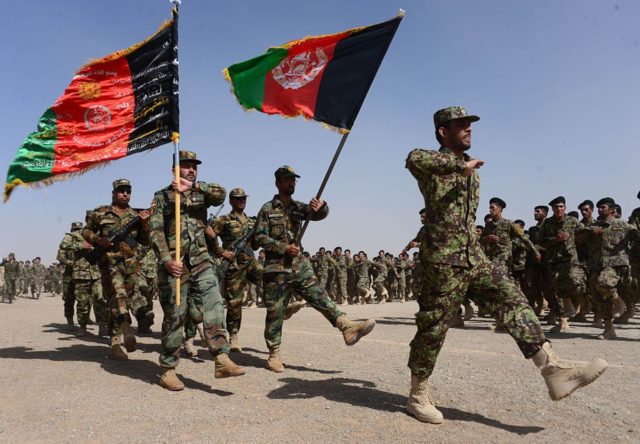The Obama administration has announced that it will not cut the U.S. troop deployment in Afghanistan to 5,000 as planned, but will leave 8,400 soldiers to support the Afghan government in its fight against the Taliban. President Obama said, “Compared to the 100,000 troops we once had there, today, fewer than 10,000 remain.”
That is true, but why 8,400? Why not 50,000? Why not zero?
In making his announcement, President Obama said, “Even as we remain relentless against those who threaten us, we are no longer engaged in a major ground war in Afghanistan.” That’s interesting, but exactly who in Afghanistan threatens the United States? And how relentless can we be with 8,400 soldiers?
In 2010, Dr. Steven Metz of the Strategic Studies Institute of the U.S. Army War College wrote that the Obama administration’s Afghan strategy (like that of the Bush administration before him) was based on three assumptions:
- Al-Qaeda “needs state support or sanctuary.”
- If the Taliban regains control of Afghanistan, “it will again provide bases and sanctuary to al Qaeda.”
- If the Taliban “did, for some reason, provide support and sanctuary to al Qaeda, this would increase the threat to the United States and other NATO countries.”
Assuming that Metz is right about what the U.S. feared/fears emerging from Afghanistan, America clearly has not been successful in creating a secure Afghanistan able to defend itself from the Taliban and repel al-Qaeda. Broad Taliban military successes are the reason the president changed the number of troops he’s willing to leave there. Al-Qaeda remains a force, albeit less of one as ISIS has grown, but that may not be a permanent situation.
It’s not that we haven’t done things.
We tried ousting the Taliban ourselves and tried training Afghan forces to do it. We tried instituting Western-style elections and changing the role of women in society. We provided $110 billion in civilian and (mainly) military aid between 2002 and 2015. We tried more troops and fewer troops. We tried fighting on the ground and supporting Afghans from the air. We tried drones in Pakistan and supporting the Pakistani government to the tune of billions in military aid every year, including $25.91 billion between 2001 and 2013.
But as any military person will tell you, the question is not what to do, but what you want to have done – and determining that is the responsibility of the civilian leadership. FDR told Ike to bring him the “unconditional surrender” of Germany. He didn’t tell him to cross the Channel on June 4, 1944.
This is an issue not only of troops in Afghanistan, but also of how the U.S. sees the post-9-11 landscape and the enemies who were there long before but not recognized. In the almost 15 years since 2001, radical Islamic ideologies and armies have spread to a variety of countries across the Middle East, North Africa, and Southwest Asia. Our experience with terrorists filling ungoverned and under-governed spaces is broader and deeper. Large-scale terrorism against Western interests, but even more against Muslims who are insufficiently obedient or enthusiastic about ISIS, Boko Haram, Hamas, Hezbollah, and others, has killed tens of thousands. But our understanding appears not to have grown commensurately.
The U.S. presently has troops in Syria, Iraq, Yemen, Libya, and Afghanistan – five countries with which we are not at war and whose governments we have pledged neither to oust nor to defend. The exact numbers are fuzzy, but there appear to be 250 in Syria; 4,000 in Iraq; nearly 10,000 in Afghanistan, of which the above mentioned 8,400 will remain; “a small number” in Libya, according to their commander, LTG Thomas Waldhauser, USMC; and a “very small number” in Yemen, according to Pentagon spokesman Jeff Davis.
The American public is barely paying attention. This is not the 600,000-person deployment of the First Gulf War, or the 130,000 of the Iraq War, or even the 30,000-troop “surge” in Afghanistan by President Obama. And, fortunately, the death and injury toll is low. But they are American soldiers – not anonymous “boots on the ground” – and they deserve to have a militarily achievable mission before them when they are sent to fight and perhaps to die.
If the civilian leadership can’t do that for them, the correct number of soldiers to have in Afghanistan or anywhere else is not 8,400 or 50,000 or 10. It is zero.


